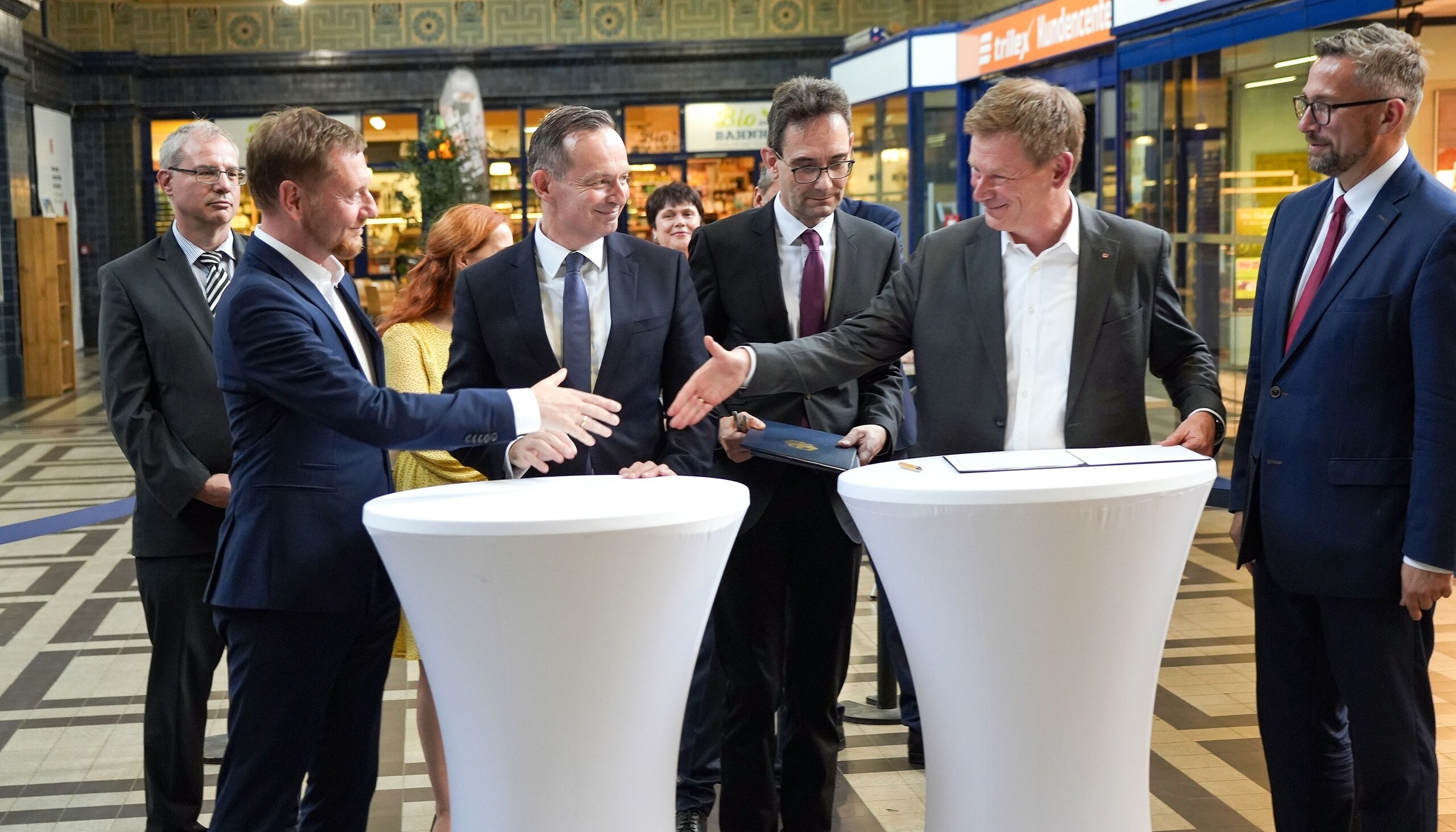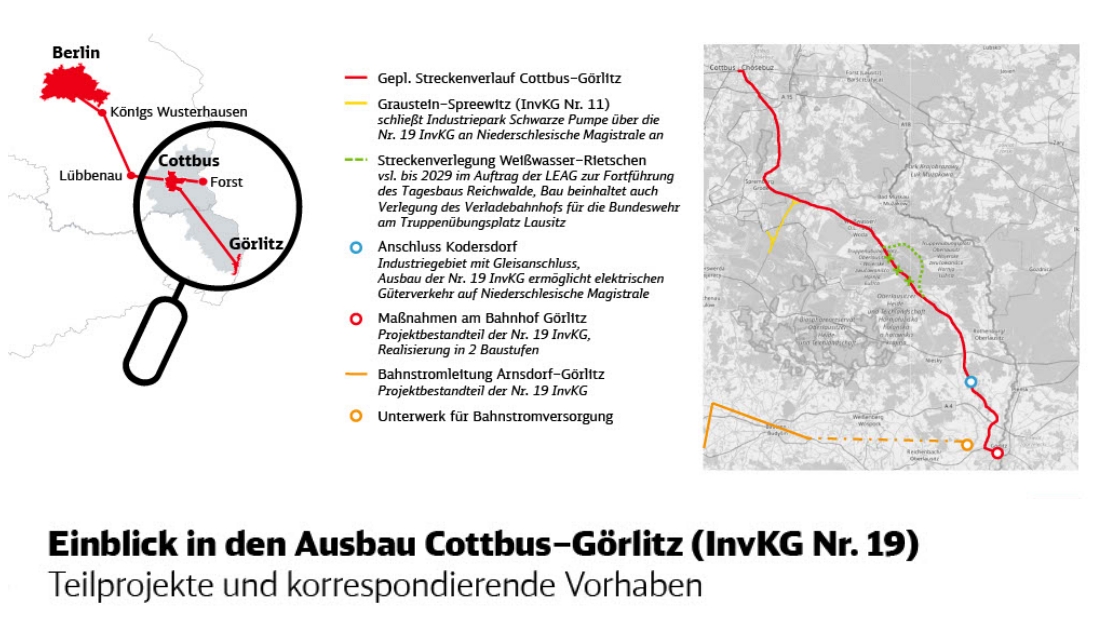structural development
A breakthrough for the region
- structural development
- Hits: 485

Progress for structural change: everything about expanding the Berlin-Cottbus-Görlitz railway line
The structural change in Lusatia is receiving a significant boost thanks to the agreement signed on Wednesday at Görlitz train station between Federal Transport Minister Volker Wissing and the CEO of Deutsche Bahn, Richard Lutz. The agreement aims to implement the expansion of the Berlin–Cottbus–Weißwasser–Görlitz route. In the future, trains on this connection will be able to travel at speeds of up to 160 km/h. Prime Minister Michael Kretschmer emphasized that the travel time should be reduced from the current three hours to just over one and a half hours in the future. This is not only a benefit for travelers, but also a “significant contribution to improving mobility and accessibility in the region”.
Federal Minister Wissing underlined the importance of this project in the context of structural change and climate protection and emphasized that the expansion and electrification of the route between Cottbus and Görlitz should serve as a model for similar projects in other coal regions. DB board member Richard Lutz describes the Berlin-Cottbus-Görlitz connection as an anchor project that symbolizes the entire structural change in the coal regions . The electrification and double-track expansion will create a “strong rail” that will not only better connect the region with the capital Berlin and its Polish neighbors, but will also make an important contribution to the success of structural change.

Things are moving forward: a good atmosphere in what is probably Germany's most beautiful train station
Prime Minister Kretschmer spoke of the “largest infrastructure project in structural change,” in which both Saxony and Brandenburg are involved and are jointly investing 1.8 billion euros. The Cottbus Chamber of Commerce and Industry sees the signing of the agreement as a significant milestone for structural change in Lusatia and is therefore calling for construction to begin quickly. In addition, ten further rail projects are planned in regions of Germany affected by the coal phase-out. The double-track expansion and electrification of the line between Cottbus and Görlitz are the largest projects in this rail infrastructure offensive. Michael Kretschmer spoke at the train station about the importance of the railway line between Görlitz and Berlin. “We have preferred two goals in Saxony: innovation and infrastructure,” he says. Dresden, Leipzig and Chemnitz offer good examples. Now, with the help of the coal money, the connection to Lusatia will follow.
Ten more rail projects planned
The signed agreement covers the planning of a total of ten rail projects, including the Cottbus-Forst (Spree-Neiße), Leipzig-Falkenberg (Elbe-Elster)-Cottbus routes and the 44-kilometer-long northern section between Bad Lausick and Geithain of the Leipzig-Chemnitz route. These projects aim to better connect Lusatia to the existing intra-European freight transport routes in east-west and north-south directions.
Preparations for planning these projects have already begun. The next steps include surveys, environmental studies and alignment. Construction is scheduled to begin in the 2030s, a railway spokeswoman said.

From Görlitz to Berlin in 1.5 hours
According to Kretschmer, it will be attractive for workers to commute to Berlin in the future. “Working for two or three days in the capital means completely new perspectives for Lusatia.” “In the future, you can be in Berlin from Görlitz in an hour and a half,” with stops only in Weißwasser and Cottbus.
Without money from the federal government's structural change pot, the route expansion would probably not take place in this form, said the Prime Minister. He also commented on the connection between Lausitz and the Saxon state capital: “It’s our turn.” From Dresden to Bischofswerda “everything is clear, thanks to funds from Saxony”. For further route expansions, one must also consider the “time frame extending into the 2030s.”
We at ENO, together with experts and citizens of the region, are also rethinking mobility in Lusatia - and are already implementing it. If you would like to find out more about this, it is best to take a look at our extensive Unbezahlbarland blog archive on the topic.
By signing the agreement, the federal government and Deutsche Bahn are sending a strong signal for structural change in the coal regions. The planned rail projects will not only better connect the regions to important economic centers, but will also create new perspectives for the local people. This is a crucial step in successfully shaping structural change and sustainably securing the economic and social future of the affected regions.
Photos & graphics: Die Bahn Presse
Thank you for rating this post.
